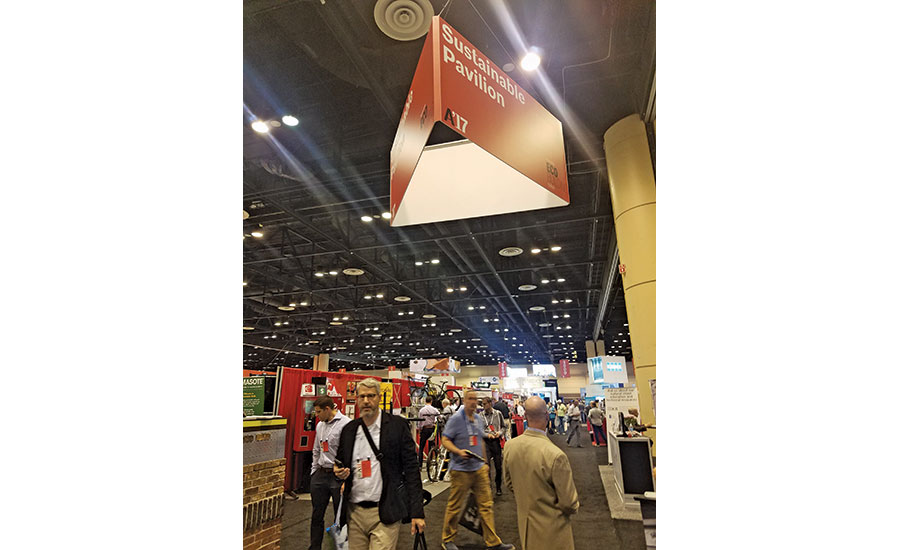The American Institute of Architects’ advice to building-product manufacturers and material suppliers: Improve your websites, provide free, product-related continuing education to design firms and hone your expertise on your offerings to strengthen your rapport with your customers. Those are some of the recommendations made to BPMs in a recently released report that surveyed architects about their specification process.
According to “The Architect’s Journey to Specification,” 85% of specifying architects use manufacturer websites to seek out products and materials. That makes websites the most-used source—ahead of manufacturer-developed continuing education, manufacturer representatives, products from previous projects, and events, conferences and trade shows.
But the websites are not up to par, according to the 330 architect-respondents surveyed. “We see a lot of problems with this source,” said Nik Werk, senior research manager for B2B International, at the AIA Conference on Architecture 2017, which drew roughly 16,000 registrants to Orlando, Fla., from April 27 to 29.
Out-of-Date Websites
According to the respondents, manufacturer websites contain incomplete and out-of-date information that is difficult to find or access, said Werk, who conducted the survey last year for the AIA and its survey sponsor, ConstructConnect, a construction market-research firm. The report is available for $999; for AIA members, it costs $749.
“The most-used source of information is also one that provides architects with a lot of headaches,” added Werk, who said that, compared with other industries in which he has worked, it is “unusual” to see so many issues with weak websites.
“There seems to be a bit of a proprietary culture [in which] manufacturers make it difficult to access and compare information on their websites,” he added.
Beyond website betterment, the report advises manufacturers to create programming that qualifies for the architects’ continuing-education credits. But manufacturers must keep selling out of the mix. “An architect views marketing and direct selling of products, services or specific brands very poorly,” says the report. “If product manufacturers try to sell within educational programming, they will undermine” relationships with architects and specifiers.
The report also advises BPMs to create an informed sales force, armed with technical information and specifications.
The report recommends that BPMs be “proactive” in servicing their customers and providing assistance, even in the latter stages of the specification process. It also advises BPMs to be transparent as a way to garner loyalty from their customers.
“This will translate to greater market share, as architects start to look at the manufacturer as an extension of their project teams,” says the report.
John Crosby, AIA’s managing director of corporate partnerships, mentioned a downside of architects as specifiers. “There is increasing pressure for architects to take on roles traditionally reserved for consultants and specifiers,” he noted. “Coupled with existing time demands, this has to limit the level of innovation and consideration of new products in their projects.”
Updated Contract Documents
At the convention, the AIA Contract Documents group released the 2017 AIA documents—an update that occurs every 10 years. The biggest single new item, relating to insurance, bonds and insurance exhibits, is an insurance exhibit that goes with the key owner-contractor agreements. To craft the project’s insurance, it allows the owner and the contractor to have a detailed discussion about the proper insurance coverage and different types of coverage, said Kenneth Cobleigh, an AIA managing director and counsel.
A major addition is a single sustainable projects exhibit that can be used on any project and added to most AIA contracts to address the risks and responsibilities associated with sustainable design and construction services. The exhibit is based on the AIA’s 2011 sustainable projects guide, said Cobleigh.
The new agreements contain a prompt for the parties to discuss and insert an appropriate fee for termination of service for the owner’s convenience. This new language replaces an entitlement clause. “We were hearing that owners would strike the entitlement clause anyway,” said Cobleigh. “Here, we’re prompting a discussion.”
In addition, according to the documents, the architect is no longer required to redesign for no additional compensation if he or she could not have reasonably anticipated the market conditions that caused the bids or proposals to exceed the owner’s budget.





